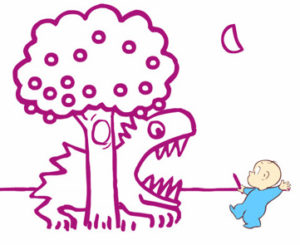Christmas Yet to Come: Reading “A Christmas Carol” as a writer
In addition to being a seminal work of literature, Charles Dickens’ A Christmas Carol is a beautifully-constructed story, and writers can learn by studying it. A memorable protagonist, compelling flashbacks, conflict and tension—and by the time the “Ghost of Christmas Yet to Come” arrives, we’re totally sold on the ending, Ebenezer Scrooge’s redemption.
We bring it to you today not only because it’s Christmas day, but because this last week of the year is a perfect time to think about the Christmas seasons in your future. What will you have written by this time next year?
Or maybe the question is larger than that. Perhaps we should read A Christmas Carol as a caution. None of us wants to find ourselves an old Scrooge, having not done what we were called to do—to have not told the stories we wanted to tell.
And so we ask again: what will you have written by this time next year?
From A Christmas Carol, by Charles Dickens
Chapter 4: The Last of the Spirits
The Phantom slowly, gravely, silently approached. When it came near him, Scrooge bent down upon his knee; for in the very air through which this Spirit moved it seemed to scatter gloom and mystery.
It was shrouded in a deep black garment, which concealed its head, its face, its form, and left nothing of it visible, save one outstretched hand. But for this, it would have been difficult to detach its figure from the night, and separate it from the darkness by which it was surrounded.
He felt that it was tall and stately when it came beside him, and that its mysterious presence filled him with a solemn dread. He knew no more, for the Spirit neither spoke nor moved.
“I am in the presence of the Ghost of Christmas Yet to Come?” said Scrooge.
The Spirit answered not, but pointed onward with its hand.
“You are about to show me shadows of the things that have not happened, but will happen in the time before us,” Scrooge pursued. “Is that so, Spirit?”
The upper portion of the garment was contracted for an instant in its folds, as if the Spirit had inclined its head. That was the only answer he received.
Although well used to ghostly company by this time, Scrooge feared the silent shape so much that his legs trembled beneath him, and he found that he could hardly stand when he prepared to follow it. The Spirit paused a moment, as observing his condition, and giving him time to recover.
But Scrooge was all the worse for this. It thrilled him with a vague uncertain horror to know that, behind the dusky shroud, there were ghostly eyes intently fixed upon him, while he, though he stretched his own to the utmost, could see nothing but a spectral hand and one great heap of black.
“Ghost of the Future!” he exclaimed, “I fear you more than any spectre I have seen. But, as I know your purpose is to do me good, and as I hope to live to be another man from what I was, I am prepared to bear you company, and do it with a thankful heart. Will you not speak to me?”
It gave him no reply. The hand was pointed straight before them.
“Lead on!” said Scrooge. “Lead on! The night is waning fast, and it is precious time to me, I know. Lead on, Spirit!”
A Christmas Carol is in the public domain, so it’s easy to find and download in a number of formats. (Goodreads has some options here.)


